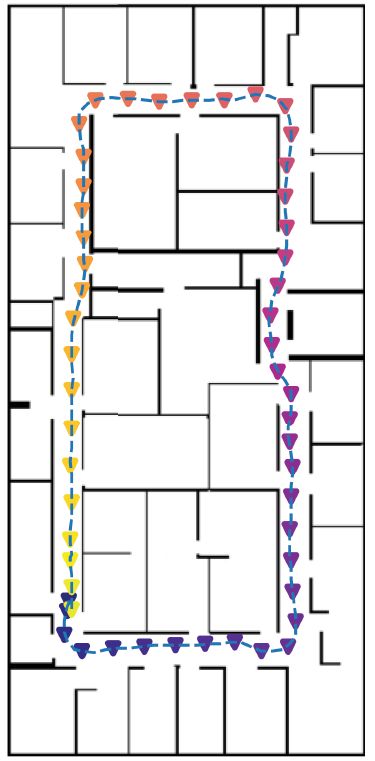Abstract
Independent wayfinding is a major challenge for blind and visually impaired (BVI) travelers. Although GPS-based localization approaches enable the use of navigation smartphone apps that provide accessible turn-by-turn directions in outdoor settings, such approaches are ineffective in indoor and other GPS-deprived settings. We build on our previous work on a localization algorithm based on computer vision and inertial sensing; the algorithm is lightweight in that it requires only a 2D floor plan of the environment, annotated with the locations of visual landmarks and points of interest, instead of a detailed 3D model (used in many computer vision localization algorithms), and requires no new physical infrastructure (such as Bluetooth beacons). The algorithm can serve as the foundation for a wayfinding app that runs on a smartphone; crucially, the approach is fully accessible because it does not require the user to aim the camera at specific visual targets, which would be problematic for BVI users who may not be able to see these targets. In this work, we improve upon the existing algorithm so as to incorporate recognition of multiple classes of visual landmarks to facilitate effective localization, and demonstrate empirically how localization performance improves as the number of these classes increases, showing the time to correct localization can be decreased by 51-59%. The source code for our algorithm and associated data used for our analyses have been made available in a free repository.

